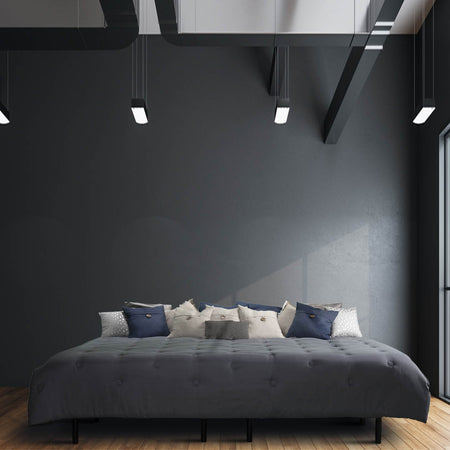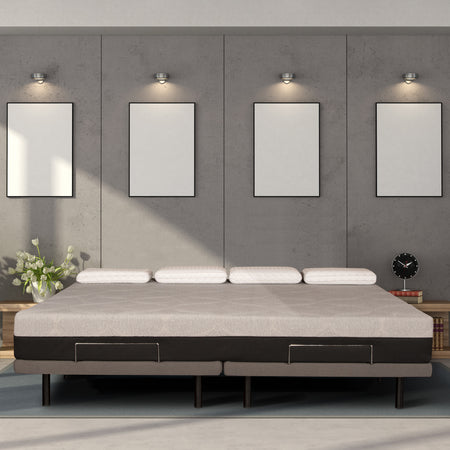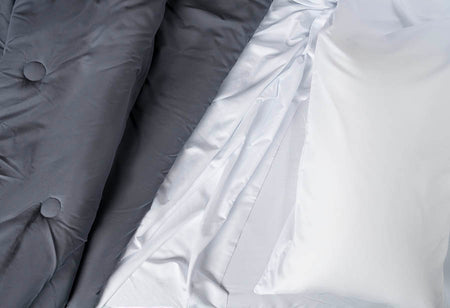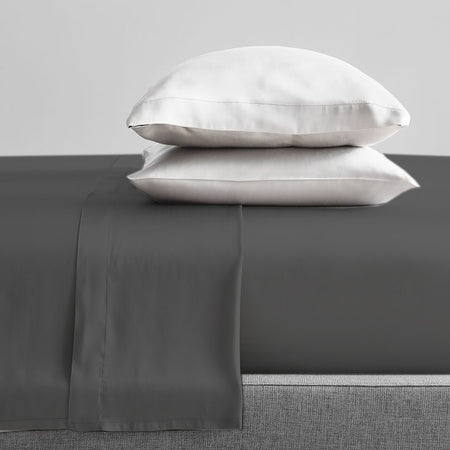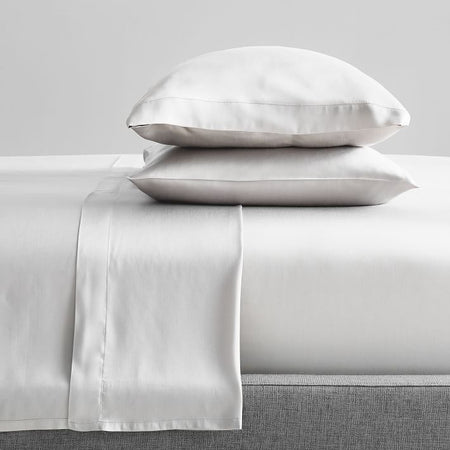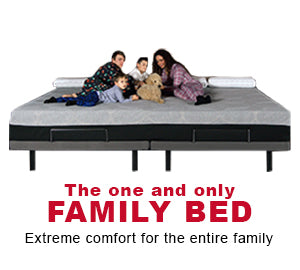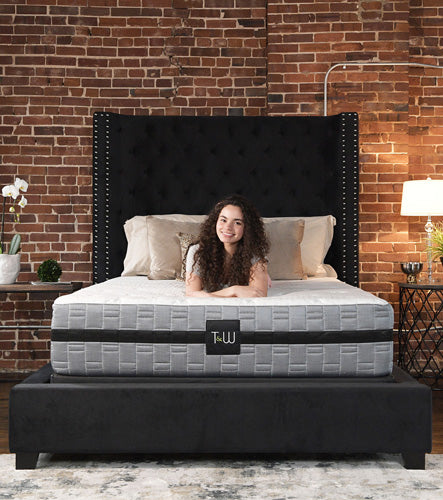When you go out to shop for a mattress, you most likely pay attention to two main qualities - comfort and support. And that makes sense since you spend more than seven hours a day on your bed. But have you ever stopped for a second to think about what exactly is inside a mattress – or what contributes to the comfort and support? In this article, we will shed some light on the components of a mattress to help you make a better purchase decision.
Discover what your mattress is made of

The market has all kinds of mattresses, each made out of different components. There are innerspring mattresses, memory foam, coiled, adjustable beds & more! These components play a big part in how you sleep at night. So basically, they determine whether you’ll have a good night's sleep and full rest for better health or experience drowsiness, back pain, memory loss issues, heart conditions, among other annoying side effects of sleeping on a bad mattress. Understanding these components will help you identify the best types of mattress for your home, budget, and sleep needs.
Mattress components
A mattress has three functional components, namely:
- Comfort component
- Support component
- Base or foundation
Each component can either be made out of one or several materials. But in some cases, only a single material is used for both support and comfort. Let’s look at this in-depth.

Support components
As the name suggests, this mattress layer consists of materials that provide adequate support for the body. The support layer helps the comfort layers provide adequate cradling to relieve pressure on specific body parts. It also stabilizes the mattress and determines how much your body sinks into the mattress. It’s made out of several types of designs, materials, and construction – all of which makes the mattress more or less supportive and may provide benefits like less motion transfer, stronger edge support and better airflow.
Support core construction
The support core is often made using materials that absorb and distribute pressure and provide support while maintaining structural integrity. Some common examples of support cores materials include latex and foam cores that offer firm and solid support. Innerspring/coil, air chambers and water bladders that let you adjust support core firmness are also used as support cores.
Innerspring/coils
Coils or innerspring provide the support functions of the mattress. You’ll find them in an innerspring or hybrid mattress. Often made of steel, coils/innerspring layer are combined with comfort layers like latex, polyfoam, or natural fibers for extra comfort and support. There are four types of coil/innerspring support cores: Bonnell, offset, continuous, and pocketed coil. These steel coils vary in thickness, from 12.5 to 16, with higher gauges making the bed more soft and springy. Other factors like the type of steel, number of turns used in each coil, coil construction, tempering of steel, and insulation layers also impact the firmness feel of the coil mattress. This is important for side sleepers.

Latex
Latex mattresses have their support core layer made out of latex. Latex is a type of rubber made with synthetic or natural material and comes in varying firmness levels. It makes an excellent support layer material by itself. However, it can be paired with other materials in the support layers to improve their qualities. It can also be applied under any other material used as a comfort layer and is ideal for progressive, differential, and zoned construction.
Polyurethane foam
A mattress can have polyurethane foam (polyfoam) in medium or higher density at its support layer. Polyfoam compresses under pressure and heat, providing a higher resilience and progressive resistance. Sometimes, polyfoam forms the bulk of the support core. But other times, it can serve as an encasement or base for other materials like coils. A foam mattress is one that’s made with an entire polyfoam support core.
Comfort component
This is the fiber or foam layer that’s added on top of the support system to offer the softness and comfort of the mattress. Manufacturers use different amounts, densities, and shapes of padding materials, usually polyfoam, latex, gel, cotton, polyester, cashmere, and wool, to attain different softness levels. Pillow top models are the softest and have more padding layers on the top, whereas firm models only have a few layers.
Comfort system components
Most mattresses use multiple layers that together form the comfort layer. These include cover, padding and quilting, comfort layer, insulator/transitional layer.
- The cover envelops a mattress.
- Quilting and padding come after the cover and cushion the surface for more comfort. The layer is often made of breathable materials that allow heat to escape.
- The comfort layer is the thickest part of the comfort system and may have one or more distinct layers.
- Lastly, the transitional or insulator layer sits below the comfort layer and serves as a buffer between the dense, firm support core and softer quilting and middle upholstery.

Comfort layer materials
As mentioned earlier, the comfort layer can be made from different materials. These materials can be categorized into six varieties, namely:
Memory foam
Memory foam is mainly used in transition and comfort layers for its conforming nature. Memory foam mattresses often use memory foam in the entire comfort system. But some mattress types also add other layers of latex, polyfoam, or mini coils. Memory foam softens with heat, providing a body-hugging sensation while enabling it to relieve pressure points around the hips, lower back, and shoulders.
Polyfoam
Uniform and convoluted are the two main types of polyfoam for comfort layers. Convoluted polyfoam has ridges and is often used in transition layers. Uniform polyfoam has a flat; even surface is mainly used in middle upholstery and quilting. Polyfoam is relatively low density and is generally not considered a high-end material for comfort layers. It doesn’t contour as deeply as latex or memory foam and may degrade quicker because of its lower density.
Natural fibers
Natural fibers include silk, hemp, coconut coir, horsehair, cotton, wool and are a great alternative to latex, polyfoam, or memory foam. They provide excellent breathability and cushioning and are also durable.

Mini coils, micro-coils, and nano coils
More manufacturers are now using coils in comfort layers. Mini coils, micro-coils, and nano coils are significantly smaller than those found on innerspring and hybrid models. So, they have a different feel and contour the body to relieve pressure while adding breathability and bounce to the comfort system. These coils are often encased in fabric or foam to minimize motion transfer.
Foundation
It’s any base element or support placed underneath a mattress that supports the bed, elevates the mattress and extends life. Today, most mattresses use platform foundation, a solid, non-giving base designed out of a wooden box with wooden slats and metal crossbars. A movable or adjustable base provides the flexibility to bend and change your position.
You may also find a traditional base underneath your mattress. This is called a box spring and offers additional support. Box spring uses heavy-duty coils that serve as shock absorbers, only budging when weight and pressure are applied.



